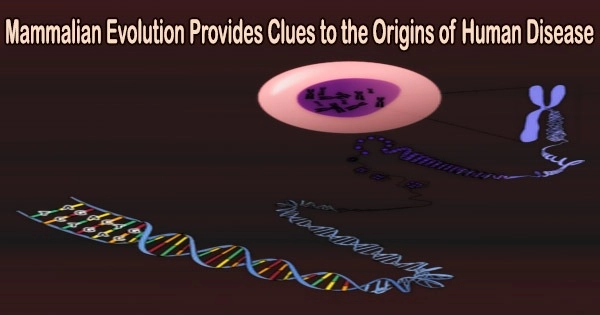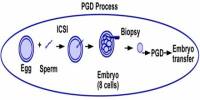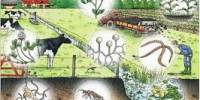Hundreds of scientific research have been undertaken over the years to identify the genes responsible for common human features such as eye color, IQ, and physical and mental disorders.
Patrick Sullivan, MD, FRANZCP, the Yeargan Distinguished Professor of Psychiatry and Genetics at the UNC School of Medicine, and the Psychiatric Genomic Consortium have produced a new packet for the journal Science to give researchers another way to understand human disease, using the power of evolutionary genomics.
“This is a tool that can give us a lot of important hints about human disease,” said Sullivan, who is also a professor at the Karolinska Institute in Stockholm, Sweden. “If we can take a deep dive into your genome, we can get some idea about your ancestors, both human and nonhuman, and observe the impacts of many millions of years of evolution in you.”
What makes us mammals
Every single living organism on the planet has DNA. The self-replicating material serves as a template for organisms to produce specific compounds such as proteins. It should come as no surprise that humans and our closest relatives, chimps, share 98.8% of their genetic material.
While some of our genes have evolved over time, others have remained constant throughout mammalian evolution. These are known as “highly constrained” genes in the scientific community. In many parts of the genome, some human genes have a startling amount of genetic similarities with mice, cows, dogs, cats, bats, and dolphins.
This research project has really given me a much, much deeper understanding of the genome and how the genome is set up. I now use this all the time in trying to understand schizophrenia, suicide, depression, and eating disorders.
Professor Patrick Sullivan
These are the genes that unite us as mammals. According to Sullivan, because these genes have undergone “trial by fire” throughout evolutionary history, these unaffected genomic regions must serve a key function in the organism’s health and genetic makeup.
“Some highly constrained genes can make proteins that are nearly identical in us and in a mouse,” said Sullivan. “That’s crazy because we have probably 60 million years of evolution between us and the mouse. And yet, this protein hasn’t changed so we infer that this protein is doing something really important.”
It might be simpler to see the work of our shared genes when we zoom out to take a more holistic view.
Anatomical structures shared by humans and other mammals include the four-chambered heart, lungs, hair (or fur), skeleton, and milk-producing mammary glands. On a lesser scale, we share comparable fundamental processes such as embryology, cell growth and division, and the creation and operation of synapses that carry neurological chemicals throughout our bodies and brains.
All of which are formed through our shared genetic regions. As a result, if one of these fundamental genes in a mammal is altered or removed, the organism may suffer.
A new way to look at human mental and physical health
Researchers can track a patient’s neurological brain issue or certain psychiatric disorders back to a “big hit” to one of the highly limited genes that are crucial to the nervous system, brain structure, or synapses.
Many scientists have used genome-wide association studies (GWAS) to determine where the genetic risk for a disease is located in the genome. Using genomic techniques and large-size samples, researchers can analyze the entire genome of many populations to find genetic variations, such as single nucleotide polymorphisms (SNPs), associated with a disease or a trait.
While knowing where these variations are in the genome is important, it is also useful to know how or why these genetic variations occurred in the first place. Sullivan believes that other researchers will utilize the new and comprehensive text to derive their own findings on the genetics underpinning a wide range of human disorders.
“As it turns out, a lot of brain traits are actually highly conserved,” said Sullivan, who serves as director of the UNC Suicide Prevention Institute in the Department of Psychiatry. “This research project has really given me a much, much deeper understanding of the genome and how the genome is set up. I now use this all the time in trying to understand schizophrenia, suicide, depression, and eating disorders.”
What this means for future research
As one might expect, the successful development of a human requires a lot of help from proteins and DNA sequences. There are two small sections of human DNA termed regulatory enhancers and regulatory promoters that play critical functions in DNA regulation.
The creation of a human gene is similar to a factory that produces donuts. The amount of dough squeezed out of the machine and onto the baking pan is controlled by regulatory enhancers. Promoters, on the other hand, decide when the dough is squirted onto the tray. At the end of the day, you have a full formed gene.
Researchers like Sullivan may be able to get into the DNA sequences and change the amount of proteins produced by genes, with the goal of lowering the impacts of a genetically based sickness.
“It might be possible to hit the upstream part that controls it, in a very soft way, to see if that actually helps,” says Sullivan.
















